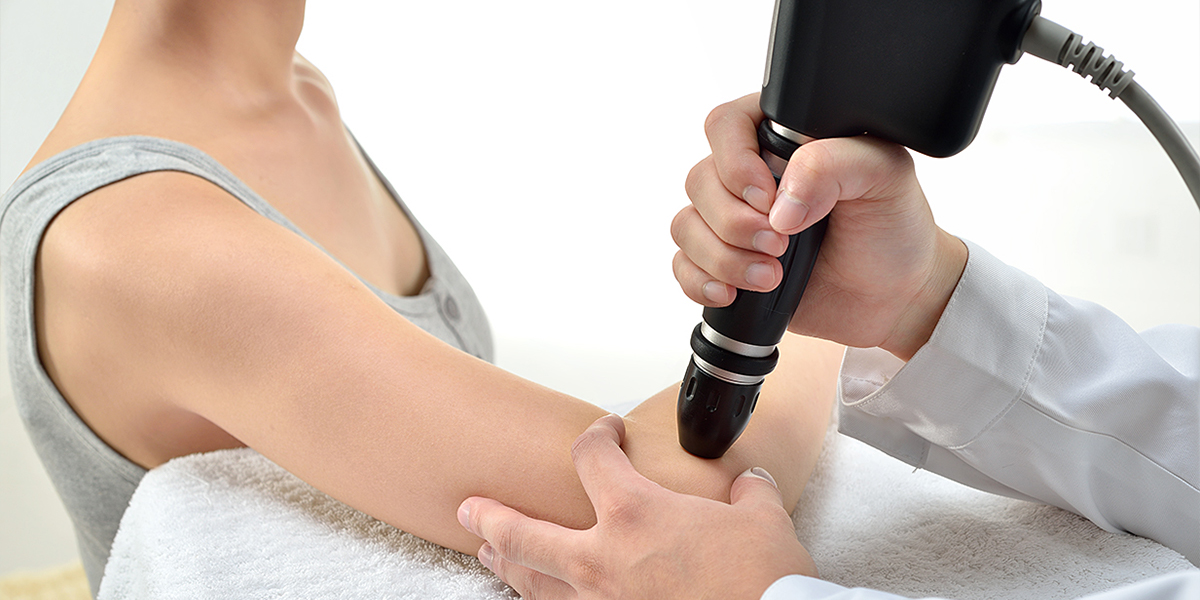Shockwave Therapy Device: Dealing with Tennis Elbow
February 13, 2024
Tennis elbow, also known as lateral epicondylitis, is a common condition characterized by pain and inflammation in the outer part of the elbow. Contrary to its name, tennis elbow is not exclusively limited to tennis players; anyone can develop this condition, irrespective of their involvement in sports. This article aims to shed light on the causes, symptoms, and treatment options for tennis elbow, helping those who experience this condition without necessarily playing tennis.
What’s a Tennis Elbow?
Tennis elbow is primarily an overuse injury that results from repetitive motions of the wrist and arm. Activities involving gripping and twisting motions, such as painting, carpentry, gardening, and even typing, can lead to the development of tennis elbow. The repetitive stress causes microtears in the tendons that attach to the outer part of the elbow, resulting in pain and tenderness.
Symptoms of Tennis Elbow
Tennis elbow typically manifests as pain and tenderness on the outer part of the elbow. The discomfort can range from mild to severe, making it challenging to perform everyday tasks that require gripping or lifting objects. In some cases, the pain may radiate down the forearm, and there may be a decrease in grip strength. If you experience any of these symptoms, it's crucial to seek proper diagnosis and treatment.
Shockwave Therapy - a non-invasive & effective way to treat tennis elbow

Shockwave therapy is a non-invasive medical treatment that has been used for various musculoskeletal conditions including tennis elbow (also known as lateral epicondylitis). It involves the application of high-energy shockwaves to the affected area to stimulate healing and reduce pain. Incorporating this treatment into a comprehensive treatment plan for tennis elbow can help improve outcomes.
How does it work?
In the case of tennis elbow, shockwave therapy aims to promote the regeneration of damaged tendon tissue and alleviate symptoms such as pain and inflammation. The shockwaves are typically generated by a specialized shockwave therapy device and delivered to the affected area through a handpiece.
Shockwave therapy works by triggering a healing response in the affected tissues. It may stimulate the release of growth factors, promote blood vessel formation, and reduce local inflammation, among other effects.
How many sessions are needed?
A common treatment protocol might involve 3-6 sessions of shockwave therapy, typically spaced about one week apart. During each session which lasts about 15 minutes, the healthcare professional will apply the shockwaves to the painful area. The intensity and frequency of the shockwaves may vary depending on the severity of the condition and the specific device being used.
Are there any side effects?
Shockwave therapy is generally considered a safe procedure, but it may cause some temporary discomfort during and after treatment. Potential side effects can include skin bruising, swelling, numbness, or tingling around the treated area. Rarely, there may be more serious complications, such as tendon rupture or infection, although these are extremely rare.
Preventing Future Occurrences
To prevent reoccurrence or further aggravation of tennis elbow, it's important to maintain good form and technique while performing activities involving repetitive motions. Taking regular breaks, using proper ergonomic equipment, and incorporating strengthening exercises into your routine can help prevent future episodes.
Remember, anyone can develop tennis elbow, regardless of whether they play tennis or not. By understanding the causes, recognizing the symptoms, and seeking appropriate treatment, individuals can effectively manage and recover from this condition. If you experience persistent pain or discomfort in your elbow, consulting a medical professional is recommended to receive accurate diagnosis and guidance tailored to your specific needs.
Looking for a reliable shockwave therapy device to increase the efficacy and efficiency of the treatment of tennis elbow? Click here.